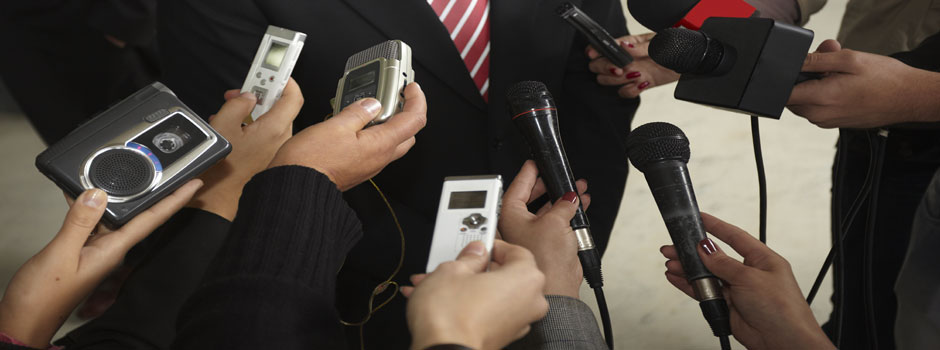The mic
Radio stations give their reporters omnidirectional microphones, that pick up sounds from all round. These are the easiest to handle. You only need to put them nearer to of further from a source of sound to change the audio recorded. For example :
When conducting an interview : you need to hear the interviewee very well. Put the mic 20 cm away from his mouth. If you’re too close, the sound will be saturated and there will be a popping effect due to the break-up signal of the mic caused by the explosive consonants. This is called a plosive. If you’re too faraway, the interviewee will barely be heard, and the sound will be under modulated.
You may get under modulated sound if the gain is too low when recording ambient sound (nat).
You will have to tape yourself while interviewing, as some at your questions might be kept when editing. Turn the mic towards yourself, putting it 20 cm away from your mouth. Don’t be too close, nor too far.
Saturated sound can’t be fixed
You’ve already seen an editing timeline. When the sound is saturated, the waves are cut up and down.. Now, you’re telling yourself that you only need to go and edit the amplitude, so as to reduce by about 3 or 4 db. Yes, you can do that. But the waves will still be cut and the sound will be ugly.
With under modulated sound, when you turn up the volume, the ambient sound (nat) will be louder as well: you won’t win any presence.
How to get a good sound ?
By respecting all that’s been said above and following this checklist :
Before you leave : check that your mic works, talk into it and listen, ask for headphones and a protective sleeve to cut the wind.
On the field : adapt the recording level by asking your interlocutor to introduce himself, tell you about his job, make some small talk… as he does that you will be able to set the proper level by looking at the peak meter on your recording device.
While recording : monitor the levels regularly.
Before saying your goodbyes to the interviewee : listen again to the end of the interview to check that your sound is good. If it’s not the case, begin the interview again and explain why you’re doing so.
For the ambient sound (nat) and wild tracks : use your headphones and monitor the levels.
AVOID DICTAPHONES. It’s a good device for taking notes, but on radio, the sound recorded is even worse than a telephone.

